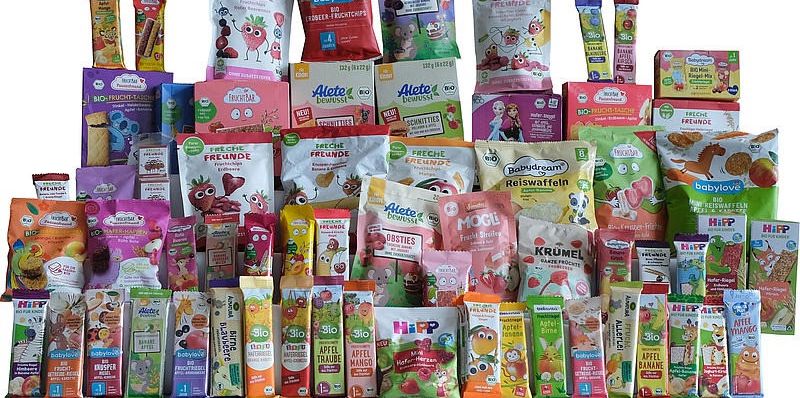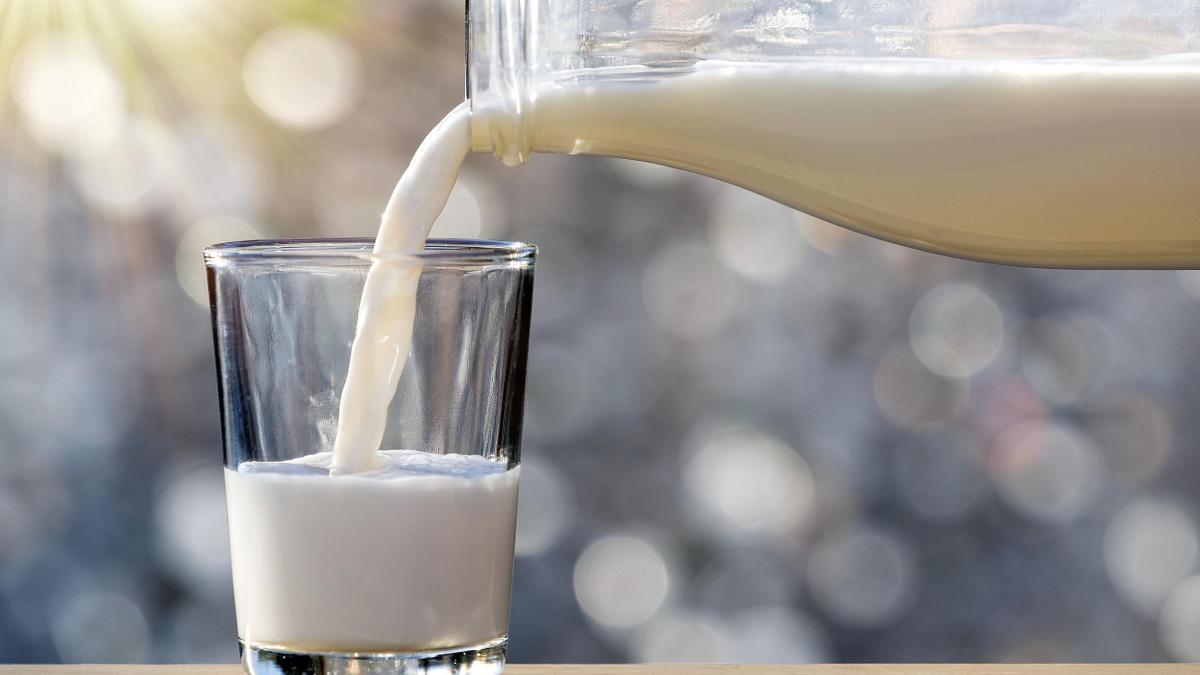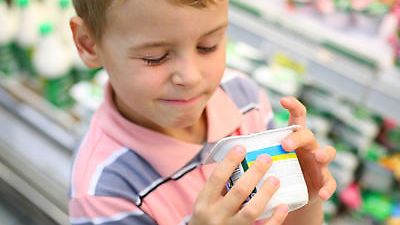Test reveals fruit snacks without added sugar as “over-sweetened”
The German organization Foodwatch tested 77 bars and fruit snacks for children. The conclusion is disastrous. Nutritionists recommend alternatives.
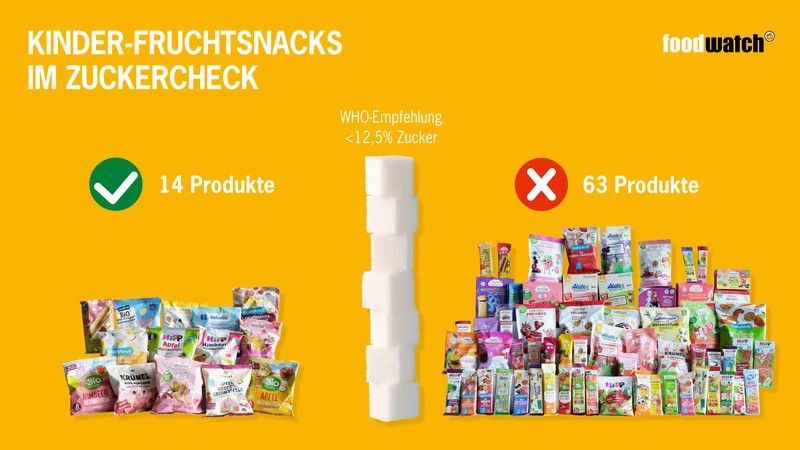
Of the 77 products tested “without added sugar”, only 14 meet the WHO recommendations. On average, the fruit snacks consist of almost a third sugar.
Photo: Foodwatch
The range of fruit snacks for children is huge. Terms such as “no added sugar” or “sweetness only from fruit” are used on the packaging to attract parents who are looking for healthy bars or desserts for their little ones.
A test by the German organization Foodwatch has revealed that most of these snacks are not healthy at all. 77 products were examined, most of which are also available in Switzerland from large retailers or discounters. On average, the fruit snacks consist of around a third of sugar. Two snacks even had a sugar content of almost three quarters: the Obsties Strawberry Banana with Yoghurt from Alete and the Raisins from Freche Freunde.
Although it is sugar from pure fruit, as Foodwatch writes, it is no healthier than other sugars. And doctors also warn against fruit snacks. During production, the cell structure of the fruit is broken down, explains metabolism doctor Stefan Kabisch to “Spiegel”. It is still natural fruit sugar, but unlike a fresh apple, it causes blood sugar levels to rise sharply and then fall again. When the next fruit snack follows, excess sugar is converted into fat, threatening obesity and an increased risk of diabetes or other diseases.
Okay in small quantities
Other nutrition experts also warn against sweet snacks. They are a luxury item and not a food, says Christian Sina from the Institute for Nutritional Medicine at the University Hospital in Lübeck. You can eat them in small quantities if you eat a healthy diet overall. “But too much of them is unhealthy – and unfortunately the sugar content in many children’s diets is far too high,” says Sina.
The expert explains that unlike glucose, fructose does not lead to insulin release, which is why there is no feeling of fullness. The child may therefore immediately ask for the next bar. In addition, excess fructose is immediately converted into fat in the liver. Even without being overweight, this can lead to fatty deposits in the organ – and possibly type 2 diabetes.
Only 14 products meet WHO limit
The World Health Organization therefore recommends that children only eat fruit snacks with a maximum of 12.5 percent sugar. The WHO believes that anything that contains more sugar should not be allowed to be advertised to children. In the Foodwatch test, just 14 of the 77 products met this limit.
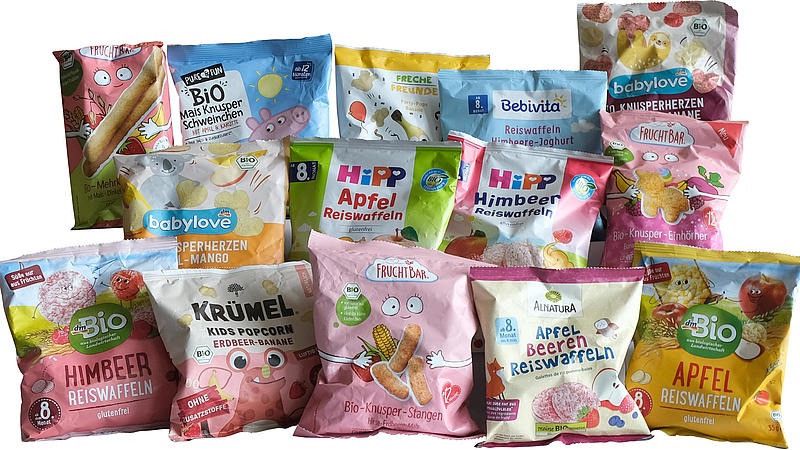
These 14 products meet WHO recommendations and contain less than 12.5 percent sugar.
Photo: Foodwatch
And only two would receive the Nutri-Score A: the “dm babylove organic crunchy hearts raspberry-banana” and “Pure & Fun organic corn crunchy piglets with apple and carrot” from Healthy Kids. Foodwatch has calculated the Nutri-Score C for 28 products, the rest would receive D or E, but no manufacturer uses the traffic light system.
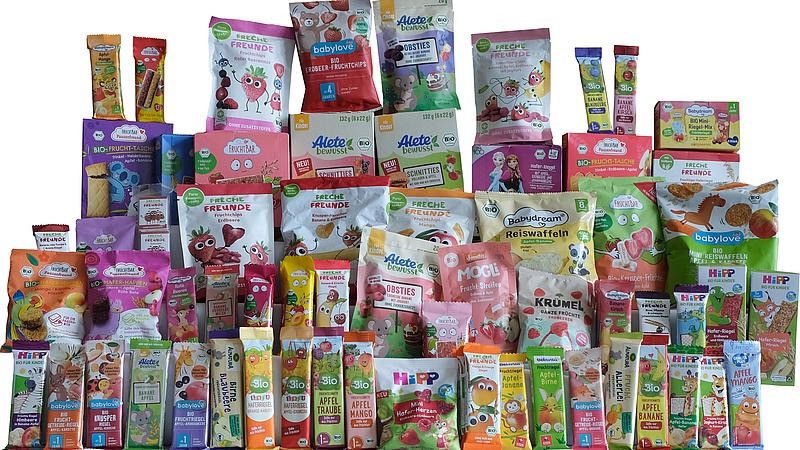
Too much sugar: bars from Hipp, Freche Freunde and Co. as well as most of the biscuits tested exceed the WHO limit and sometimes contain up to 71 percent sugar.
Photo: Foodwatch
So-called squeezies, liquid fruit from a bag, are no better than fruit snacks. These are just as unhealthy and can also damage baby teeth, warns doctor Kabisch. He recommends fresh fruit and vegetables as well as whole grain products. It is also important to take breaks in between, have set meal times and not to constantly chew on something.
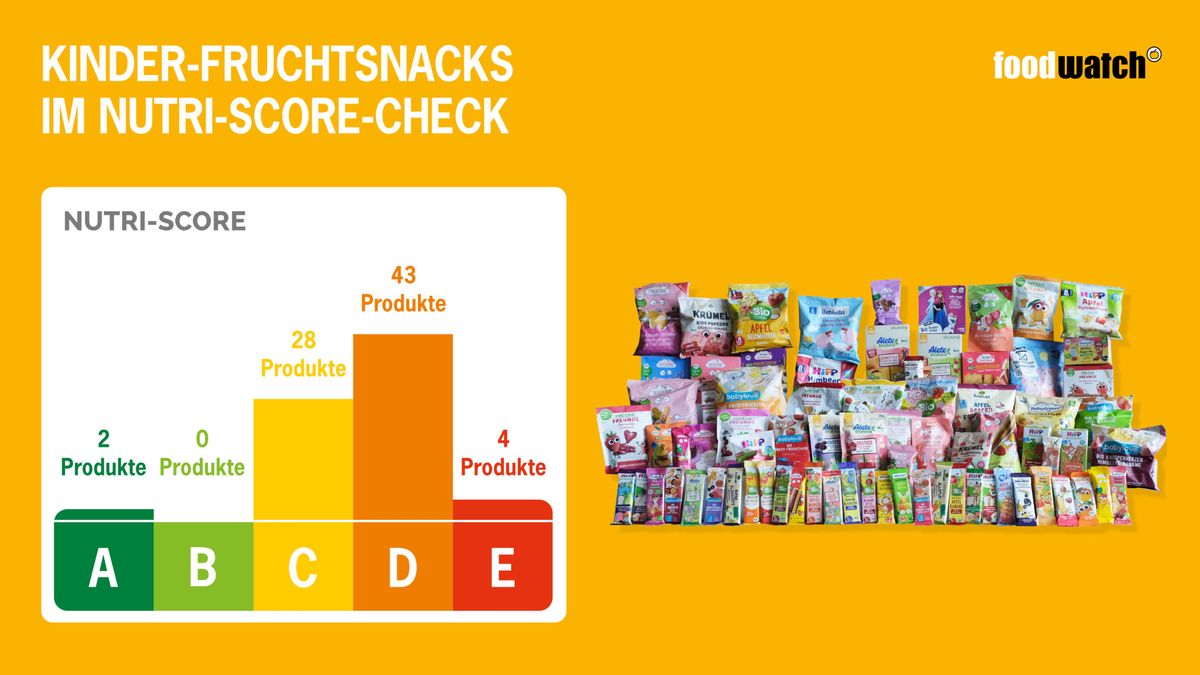
Foodwatch calculated the Nutri-Score for all 77 products. 75 made it into categories C to E, only two received an A. However, the Nutri-Score is not used on any product.
Photo: Foodwatch
It is important to learn about food culture as a child, as it is more difficult later on. Severely overweight children will also find it very difficult to reach a normal weight as adults. And sugar plays a major role in this for children. Parents have a great responsibility to set the right course for their children’s later life.
Found an error? Report it now.

